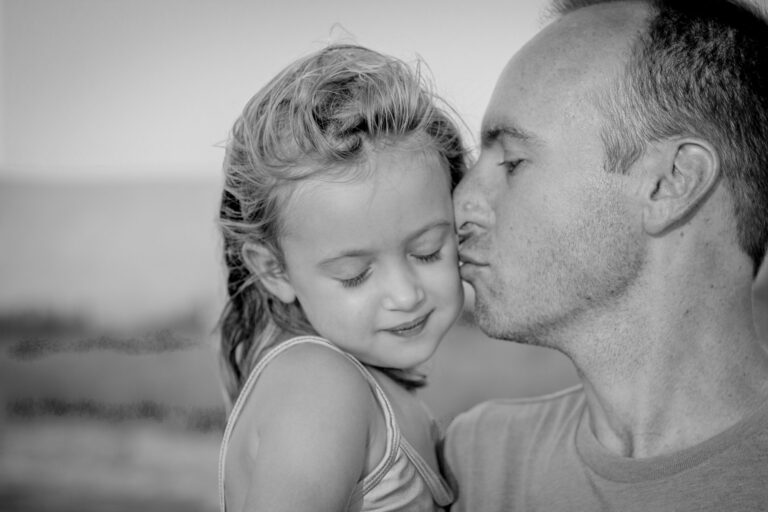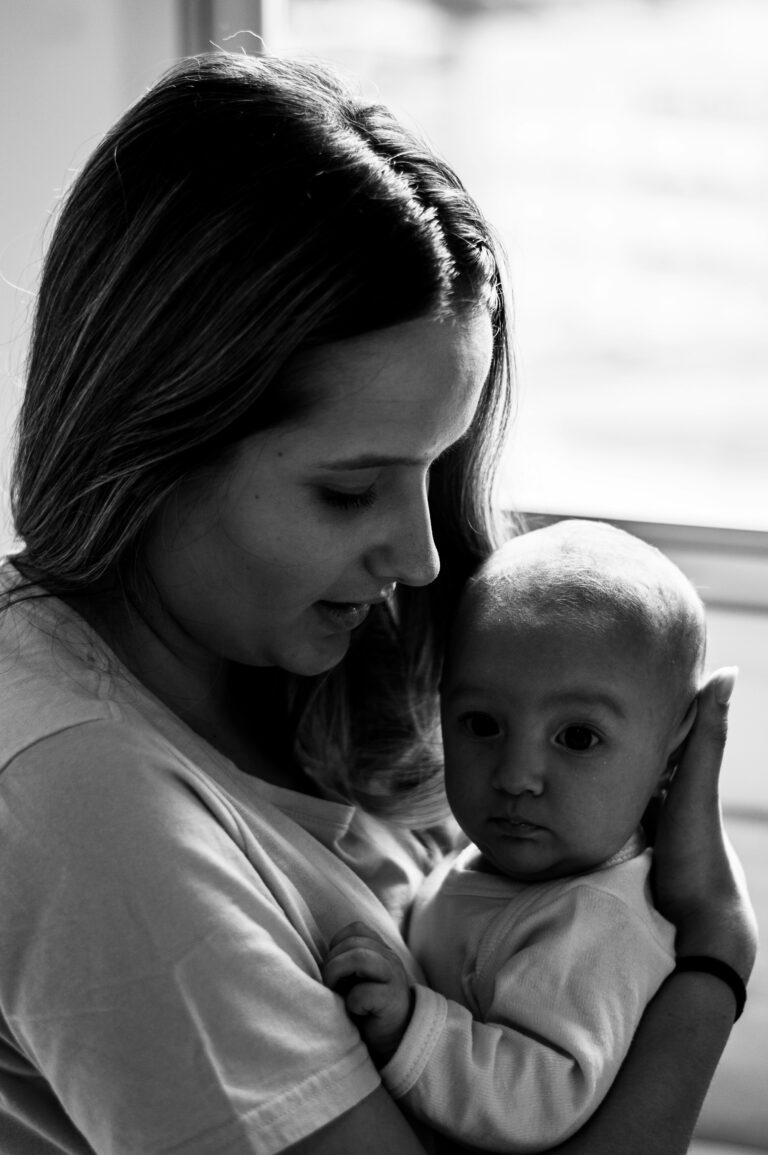Becoming a parent, whether for the first time or once again, can sweep in a cascade of emotions—joy, fatigue, pride, and, sometimes, a shadow unexpected: postpartum depression. Many parents grapple with uncertainty, perhaps feeling overwhelmed by mood swings, exhaustion, or persistent sadness when society imagines parenthood as an uninterrupted celebration. Questions arise. Is this just fatigue, ‘baby blues’, or something more entrenched? And what about fathers and partners who quietly struggle on the sidelines—why is their pain so often unseen? These concerns touch many, yet discussion remains muted by feelings of guilt or inadequacy. There is a path forward. Medical research, personal stories, and practical strategies coalesce to illuminate postpartum depression, its origins, symptoms, and the multifaceted approaches to healing. You may find clarity, evidence-based reassurance, and concrete steps for resilience within these lines.
Defining Postpartum Depression: Beyond Society’s Stereotypes
Postpartum depression stands as a mood disorder marked by an enduring low mood, emotional fragility, and diminished interest or pleasure in daily activities—all emerging after childbirth. Unlike the brief ‘baby blues’, which manifest as tearfulness or irritability but resolve within about two weeks, postpartum depression lingers, often intensifying and impairing daily functioning. It is not a personal shortcoming nor a reflection of parental potential—it is a diagnosable, treatable, and medically recognized condition. While the public might associate it predominantly with mothers, up to 26% of partners or up to 10% of new fathers also contend with these symptoms.
Some parents hide their distress, weighed down by shame or the myth that postnatal life is uniformly joyous. This silence, carved out by cultural expectations, can diminish opportunities for timely intervention. When postpartum depression is acknowledged, opportunity for healing expands: partnership in care, honest dialogue, and medical support fostered by understanding and validation.
Exploring Signs and Symptoms: The Many Faces of Postpartum Depression
How does postpartum depression actually present? Picture this: persistent sadness, relentless anxiety (often zeroing in on the baby’s wellbeing), agitation, unwarranted guilt, and a sense of profound inadequacy as a parent. Emotional symptoms are rarely isolated—familial withdrawal, delayed bonding with the infant, or abandonment of self-care often follow. Physically, you might notice overwhelming fatigue, erratic sleep (insomnia or hypersomnia), appetite changes, or even unexplained aches.
Cognitive challenges include cloudy concentration, indecision, or intrusive negative thoughts. Occasionally, severe manifestations appear: unyielding thoughts of self-harm or harm to the baby, or psychotic symptoms such as hallucinations and delusions—these signal medical emergencies requiring immediate intervention. If symptoms persist beyond two weeks or begin to dominate daily life, reaching out to a healthcare provider is not simply advised—it is a medical necessity, supported by research and professional consensus.
Roots and Risk Factors: The Interplay of Biology, Psychology, and Social Fabric
Why does postpartum depression occur in some families and not others? The answer, according to decades of research and clinical observation, is rarely simple. Hormonal shifts—specifically, a sharp decline in estrogen and progesterone after birth—alter neurochemistry and emotional regulation. Obstetric complications, such as high-risk pregnancies, prolonged hospitalization, or traumatic deliveries, increase vulnerability.
Psychological terrain shapes risk: pre-existing anxiety or depression, poor sleep, perceived or real loss of control, and diminished self-esteem all matter. Social dimensions—lack of support, financial worries, relationship discord, or isolation—further tilt the scales. Even infant challenges, such as sleep or feeding disturbances, can intensify strain on parents.
Genetic predisposition cannot be discounted. A family history of psychiatric disorders, especially mood disorders, has been shown in multiple studies to heighten risk, making early communication with healthcare providers essential during and after pregnancy.
Distinguishing Postpartum Depression from the Baby Blues and Antenatal Depression
New parenthood is naturally accompanied by fluctuations in mood, yet distinguishing normal adjustment from pathology is vital. The ‘baby blues’, characterized by mood swings and tearfulness, affect up to 85% of mothers but dissipate within days as hormones stabilize. If sadness, hopelessness, and detachment endure or worsen, this marks the potential onset of postpartum depression.
Antenatal depression—depression during pregnancy itself—shares these features but manifests before the baby is born. Studies estimate up to 10% of pregnant women experience antenatal depression, often exacerbated by relationship stress or difficult pregnancies. Persistent symptoms warrant full medical attention: antenatal depression increases the risk of postpartum depression and may impact both mother and child.
Diagnosis and Screening: Science-Guided Identification
Postpartum depression may hide in plain sight, camouflaged as fatigue or stress. Healthcare providers, equipped with clinical acumen and validated tools like the Edinburgh Postnatal Depression Scale (EPDS), perform focused assessments. These tools probe for low mood, irritability, anxiety, sleep or appetite shifts, and thoughts of self-harm. The PHQ-9 and GAD-7 serve to cross-check for underlying depression and anxiety.
Screening should be repeated, not just at the six-week checkup, but throughout the months after birth, especially if risk factors are present. Early and open screening identifies not only postpartum depression but distinguishes it from postpartum psychosis, a medical emergency that demands swift action.
Consequences of Untreated Postpartum Depression: Beyond the Parent
Leaving postpartum depression unaddressed can echo far beyond the parent. Studies link chronic maternal depression with impaired bonding, disrupted breastfeeding, and developmental delays in the baby—including social, emotional, and cognitive difficulties. Increased infant crying, feeding and sleep issues, and even future behavioral problems are well-documented.
Fathers and partners, too, can falter under the weight of another’s depression, spiraling into their own mental health struggles. Family systems suffer; household routines unravel; relationships strain and older siblings may also feel the ripple effects. Recognizing and managing postpartum depression is a public health priority with intergenerational impact.
Postpartum Depression in Fathers and Partners
Emerging research has shed light on the experiences of partners and fathers who, though often overlooked, can develop postpartum depression themselves. Triggers include sleep deprivation, increased responsibility, relationship changes, and, notably, the presence of maternal depression. The signs often mirror those in mothers—sadness, anger, anxiety, withdrawal—but sometimes manifest uniquely: increased irritability, avoidance, or somatic complaints.
Screening and support should extend to all parents. Participation in care, nurturing open communication, and early sifting of distress may prevent a silent spiral. The best outcomes for the family unit begin with broad awareness and acceptance that postpartum depression knows no single gender or role.
Science-Backed Treatment Approaches for Postpartum Depression
Recovering from postpartum depression is possible—and multifaceted. The medical consensus is clear: a combination of psychotherapy (notably Cognitive-Behavioral Therapy and Interpersonal Therapy), lifestyle intervention, and, sometimes, medication, forms the treatment backbone.
Antidepressants, particularly SSRIs such as sertraline, are considered compatible with breastfeeding in most circumstances, though each case deserves individualized discussion. Recently, innovative therapies like brexanolone (an intravenous treatment cleared by the FDA) and zuranolone (an oral neurosteroid) have shown rapid improvements for some—but require professional oversight due to potential side effects and breastfeeding considerations.
Rest, balanced nutrition, and gentle physical activity are not mere clichés. These science-backed habits, when layered with the warmth and validation of support groups or family involvement, provide a scaffolding for recovery. Integrative options—mindfulness, meditation, or relaxation techniques—can supplement but not substitute for established treatments. Open communication with healthcare providers ensures the safest, most effective choices.
Prevention and Early Intervention: Proactive Strategies for Resilience
Preventing postpartum depression often starts months before birth. Honest dialogue with medical teams about personal or family mental health histories allows for strategic monitoring. Partners play a powerful role: their involvement fosters resilience but also warrants support.
Routine screening, social connectedness, and early counseling for at-risk families offer protection. Following challenging pregnancies or traumatic births, closer follow-up and timely intervention can stave off escalation. Catching the earliest signs—fatigue morphing into despair, pervasive guilt, mounting withdrawal—creates the opportunity for targeted support and, often, a more rapid return to well-being.
Recovery, Self-Care, and Reintegration into Family Rhythm
Recovery from postpartum depression is a mosaic of strategies—medical, psychological, social, and practical. Accepting help, resting alongside the baby, eating regularly, moving gently—these are not indulgences, but essential elements of healing. Family and friends serve not only as cheerleaders but as vital pillars: offering validation, sharing the load, and smoothing the path to professional care.
Returning to work introduces fresh challenges. Negotiating flexible arrangements, maintaining ongoing dialogue with care providers, and resisting pressure toward perfection can buffer stress. Some parents may require specialized or inpatient care for severe or psychotic symptoms. Compassionate, nonjudgmental intervention can transform outcomes even in the darkest moments.
The Weight of Stigma and the Power of Community
Stigma—fuelled by entrenched beliefs, cultural scripts, or misconceptions about mental health—can push families into silence. Some communities value rituals and traditions that encircle the new parent with practical and emotional support, reducing the risk of postpartum depression. Others dismiss mental struggles as weakness, deterring parents from seeking help.
Change begins with open conversations—sharing experiences, normalizing emotional struggles, and equipping both professionals and communities with cultural competence. Education campaigns, peer support, and trusted community advocates have enormous potential to shift attitudes and open pathways to help.
Key Takeaways
- Postpartum depression, affecting both mothers and often partners, is a medically recognized and treatable condition—not a reflection of parental value.
- Symptoms go beyond fatigue or sadness; persistent low mood, anxiety, withdrawal, and changes in sleep or interest require careful attention.
- A combination of psychotherapy, medication (when indicated), lifestyle changes, and social support forms the most effective route to recovery.
- Early screening, open discussion with healthcare providers, and awareness of personal or family risk factors are strong tools for prevention and timely care.
- Whole families, including partners, benefit from support—mental health is a shared family matter.
- Stigma erodes the willingness to seek help; building culturally sensitive, validating, and proactive communities can transform experiences.
- Parents are encouraged to seek advice from health professionals and to access personalized guidance and free child health questionnaires by downloading the Heloa app.
No journey through postpartum depression is identical, but science-driven care, self-compassion, and solidarity offer hope for every family navigating this intricate transition.
Questions Parents Ask
Can postpartum depression happen months after giving birth?
Absolutely, postpartum depression can sometimes appear several months after childbirth, not just in the weeks immediately following the arrival of your baby. Every parent’s experience is unique: for some, symptoms may begin gradually and only become noticeable later on. Rassurez-vous, il est tout à fait normal que les émotions fluctuent après l’arrivée d’un enfant. Si vous remarquez des signes de tristesse persistante, de fatigue intense ou d’anxiété, même plusieurs mois après la naissance, n’hésitez pas à en parler avec un professionnel de santé. L’écoute et le soutien sont toujours possibles, quelles que soient les circonstances.
How long does postpartum depression typically last?
La durée de la dépression post-partum peut varier d’une personne à l’autre. Chez certains parents, les symptômes s’estompent en quelques semaines avec l’aide appropriée, tandis que pour d’autres, cela peut durer plusieurs mois, voire plus. Il importe de savoir que plus la prise en charge est précoce, plus la récupération peut être rapide et efficace. Rassurez-vous, de nombreux traitements existent pour accompagner chaque parent sur le chemin du mieux-être, à son rythme.
Is it possible to prevent postpartum depression?
Certaines stratégies peuvent aider à réduire le risque de dépression post-partum. Parler ouvertement de sa santé mentale pendant la grossesse, demander du soutien à son entourage, et rester en contact avec des professionnels de santé sont des démarches bénéfiques. Il peut aussi être utile de se préparer à l’arrivée du bébé en acceptant de l’aide, en se ménageant des moments de repos et en veillant à entretenir des liens sociaux. Même en étant bien préparé, il arrive que la dépression post-partum survienne ; cela ne signifie pas que vous avez failli. Il est important de s’accorder de la bienveillance et de demander de l’aide dès que le besoin se fait sentir.
Further reading:









